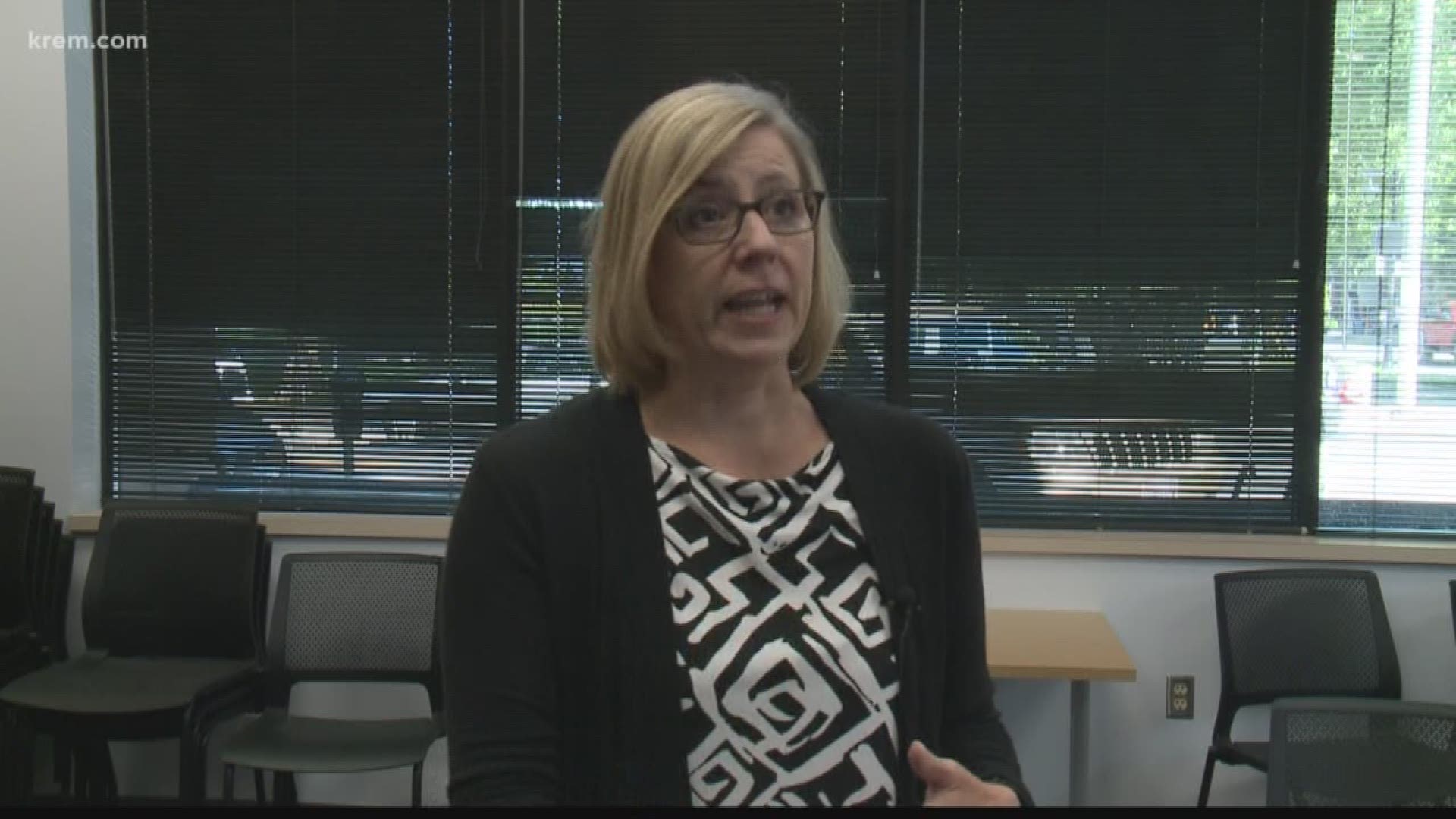SPOKANE, Wash. — Residents in the Hillyard neighborhood who were told last Friday to not drink or cook with their water had the restrictions lifted on Wednesday afternoon.
The City of Spokane announced that, after running their water for five minutes to drain stagnant water, residents in the affected area could drink and cook with their water.
The contamination is thought to have occurred when a commercial hydroseed vehicle that was connected to a hydrant accidentally allowed backflow into the system.
The affected area in Hillyard was bound by Wellesley Avenue, Freya Street, Crown Avenue and Havana Street.
Even with the restrictions lifted, people are still asking the city questions about contamination.
RELATED: City of Spokane lifts water restrictions in Hillyard, residents should run water for 5 minutes
One question that many have asked is why the company whose truck allowed the backflow hasn't been identified.
City Spokesman Marlene Feist said that releasing the name of the company could jeopardize the ongoing investigation into the incident.
"We're working with the police department to look for evidence, if there's photos or videos out there, and certainly, we don't want to compromise the integrity of that investigation," Feist said.
Feist said that while police are involved, she wouldn't call it a criminal investigation.
The estimated cost to the city caused by the contamination, from flushing the system to giving out over a thousand bottles of water, is in the tens of thousands, according to Feist.
The city gives out about 100 permits required for commercial companies to use hydrants each year, Feist said, and the permits have to be renewed yearly.
A part of the permit application requires the company to state that they have properly trained their employees to use the equipment, but Feist said that the city doesn't have a way to make sure the company has actually provided the training.
The equipment the company uses, however, is checked by the city when the company applies for the permit, Feist said.
If a person has the correct equipment and training, someone off the street could also hook up and take water from a hydrant, she said.
"Theoretically, could someone perhaps use a hydrant? I suppose so, yes," Feist said.
As for the restrictions themselves, some have asked why people were allowed to bathe and water their lawns, but not drink and cook with the water. Even more people asked this after it was announced that early tests of the water also showed levels of E. Coli in the water, which was cleared up by Sunday.
She said this is because there are no guidelines in the boil water order for E. Coli that pertain to bathing and irrigation.
"Basically, we would tell people to boil their water for some period of time, and then they could use that for drinking and cooking," Feist said. "There are no restrictions in an E. Coli boil water order around bathing or using it for irrigation."
The city doesn't yet have an exact number in Parts-Per-Million for how much E. Coli or hydroseed was in the water, Feist said.
The work the city had to do to clear the contamination, from flushing systems to replacing about 100 water usage meters that became clogged with hydroseed fibers, came at a cost. Feist said the cost between all of the aspects that went to cleaning up the contamination adds up to "tens of thousands of dollars."

